Using transformer-based AI, scientists created a full life-cycle biological clock that predicts future disease risk and uncovers the separate biological rhythms of growth and aging.
Study: A full life cycle biological clock based…

Using transformer-based AI, scientists created a full life-cycle biological clock that predicts future disease risk and uncovers the separate biological rhythms of growth and aging.
Study: A full life cycle biological clock based…

Unlock the Editor’s Digest for free
Roula Khalaf, Editor of the FT, selects her favourite stories in this weekly newsletter.
Hedge funds have adopted a new tactic in the distressed debt wars, arguing in a New York lawsuit filed on Tuesday that heavy-handed deals violate US anti-monopoly and cartel laws.
Manulife’s CQS, Algebris Funds and Deltroit Asset Management claim they were cut out of a deal that handed a group of other similarly situated bondholders disproportionate economic benefits in a debt restructuring earlier this year.
The lawsuit, which relates to the recent restructuring of Swiss vending machine operator Selecta, represents the first time that competition law has been invoked as an alleged charge of wrongdoing in the increasingly fractious realm of distressed debt litigation.
The claimants allege that a so-called co-operation agreement struck between the majority bondholders — a group that included Invesco, Man Group, Strategic Value Partners and Diameter — was specifically designed to keep the bulk economic benefits of a bond exchange from those not invited to join.
According to the complaint, the bonds currently held by the majority group trade at more than 70 cents on the dollar while the minority group has paper trading at half that level.
“The co-operation agreement is a classic example of an anti-competitive and collusive agreement between competitors . . . to control the price for Selecta Group BV’s first lien debt”, the complaint said. It alleged the agreement violated the federal Sherman Act and the New York state Donnelly Act.
So-called non pro-rata debt restructurings, where lenders or bondholders holding equally-ranked paper get different payouts, have proliferated in the US over the past decade. But only in recent years have European companies attempted such manoeuvres.
The Selecta deal drew attention this year among analysts and investors for what was believed to be one of the most complex and aggressive bond exchanges in recent memory.
Selecta, which was previously owned by KKR, had sought a solution to upcoming maturities in a near €1.5 debt stack it could not pay off.
The majority bondholder group used Dutch law on distressed disposals to take control of Selecta, and then offered a coercive bond exchange to the smaller holders.
That offer presented the smaller holders with a choice to either keep their existing paper, but pushed to the bottom of the creditor hierarchy, or take new senior paper which gave the majority group the ability to strip covenants and other protections ahead of potential future transactions through which the majority group could extract even more benefits.
Litigation over non-pro rata debt exchanges has typically centred on contract or securities law, which generally requires unanimous or supermajority approval within a class of creditors to change debt terms or execute a refinancing transaction.
Theories about how competition law may apply in intra-class disputes have surfaced in recent debates between academics and advisers.
However, those had focused on circumstances where a debtor company declared that a creditor co-operation agreement was anti-competitive, not a dispute between creditors as with Selecta.
The plaintiffs, who have separately alleged the restructuring violated contractual provisions of the bond indenture that required 90 per cent support for the deal, are requesting damages.
Samir Parikh, a law professor at Wake Forest University in North Carolina, expressed scepticism about the chances of success of the minority bondholder’s claims, but said that such a lawsuit was predictable.
“Parties resorting to antitrust law is unsurprising given the strong desire to undermine co-operation agreements and the relative ineffectiveness of other levers that have been pulled to date.”
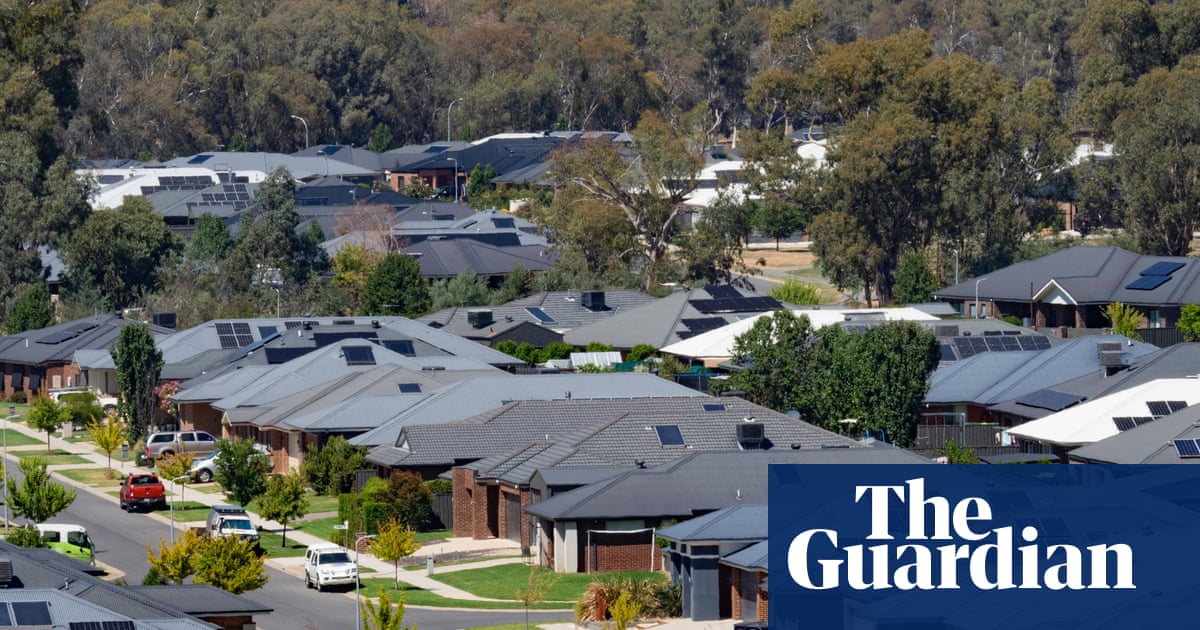
Inflation has jumped to 3.2% in the year to September, from 2.1% in June, as waning government subsidies feed through to higher household power bills.
Any lingering chance of a rate cut next Tuesday was squashed after the new Australian Bureau of Statistics figures also confirmed a troubling rise in underlying inflation.
The Reserve Bank’s preferred trimmed mean measure – which removes the impact of large, temporary price moves – climbed by 1% in the three months to September and far ahead of the RBA’s predicted rate of 0.6%.
Sign up: AU Breaking News email
That left inflation on this trimmed mean measure at 3% in the year, against 2.7% in June.
Michele Bullock, the RBA’s governor, this week made it clear that a quarterly rise in underlying inflation of 0.9% would be a “material miss”, signalling the monetary policy board would not be prepared to deliver a fourth rate cut.
While Australians will feel the bite of higher electricity prices, what has been more concerning for the central bank is the unexpected and unwelcome lift in underlying inflation.
Bullock this week made it clear that the central bank is, for now, more worried about the prospect of resurgent inflation than a recent jump in unemployment.
Bullock said the labour market was not about to “fall off a cliff” and that the jobless measure was “still pretty low”.
after newsletter promotion
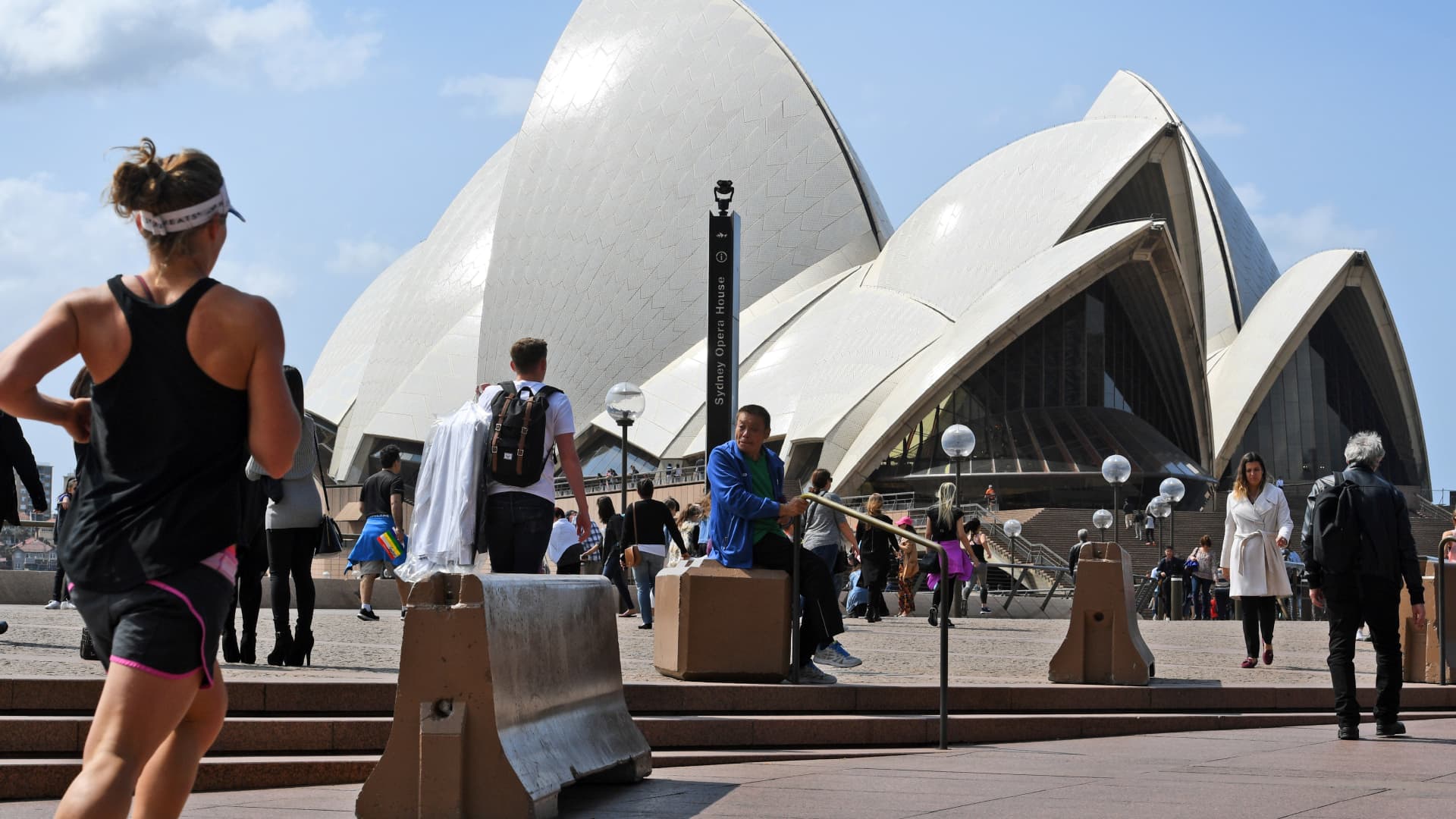
Tourists sit on a bollard at the Sydney Opera House.
Afp Contributor | Afp | Getty Images
Australia’s inflation accelerated in the third quarter, with consumer prices rising 3.2% from a year earlier — the fastest pace in more than a year — the Australian Bureau of Statistics said Wednesday.
The increase topped the 2.1% rise in the second quarter and came in above the 3% forecast by economists polled by Reuters.
The ABS said the most significant price rises were in housing, recreation and culture, and transport.
Trimmed mean inflation rate, which excludes extreme price changes in consumer goods and services, rose to 3%, up from 2.7% last quarter. It was the first increase in trimmed mean inflation since December 2022, the bureau said.
The 3.2% headline rate pushed inflation beyond the Reserve Bank of Australia’s 2%–3% target band for the first time since the second quarter of 2024, underscoring the challenge policymakers face in taming persistent price pressures.
Following the data release, the Australian S&P/ASX 200 fell 0.76%, while the Australian dollar strengthened 0.21% against the greenback to 0.6596.
The latest inflation figure means that expectations of RBA rate cuts will be “almost certainly” pushed back, Josh Gilbert, market analyst at market services firm eToro said in a note.
He added that the RBA’s goal of bringing inflation under control will take longer than anticipated, and that further rate relief may still be some way off for investors.
“This reinforces that the disinflation process is stalling while bringing stagflation concerns into the conversation, especially if unemployment keeps picking up,” Gilbert added.
The RBA had cautioned in its September Statement on Monetary Policy that inflation for the quarter could come in “higher than expected,” citing sticky prices in housing and market services.
RBA Governor Michelle Bullock said last month that inflation in those areas was “a little higher than we were expecting,” though she stressed that it did not indicate that inflation was “running away.”
In August, the central bank had forecast that underlying inflation would continue to moderate to around the midpoint of the 2%–3% range, with the cash rate assumed to follow a “gradual easing path.”
Recent headline CPI readings for July and August came in above expectations for both months, at 2.8% and 3% respectively. September inflation figures stood at 3.5%, its highest since July 2024.
Australia’s central bank kept its policy rate steady at its last meeting, noting that inflation remained stubborn in some parts of the economy.
The country’s economy outperformed expectations in the second quarter, growing 1.8% from a year earlier, marking the fastest pace of growth since September 2023. It was higher than the 1.6% expected by economists polled by Reuters and the 1.3% seen in the previous quarter.
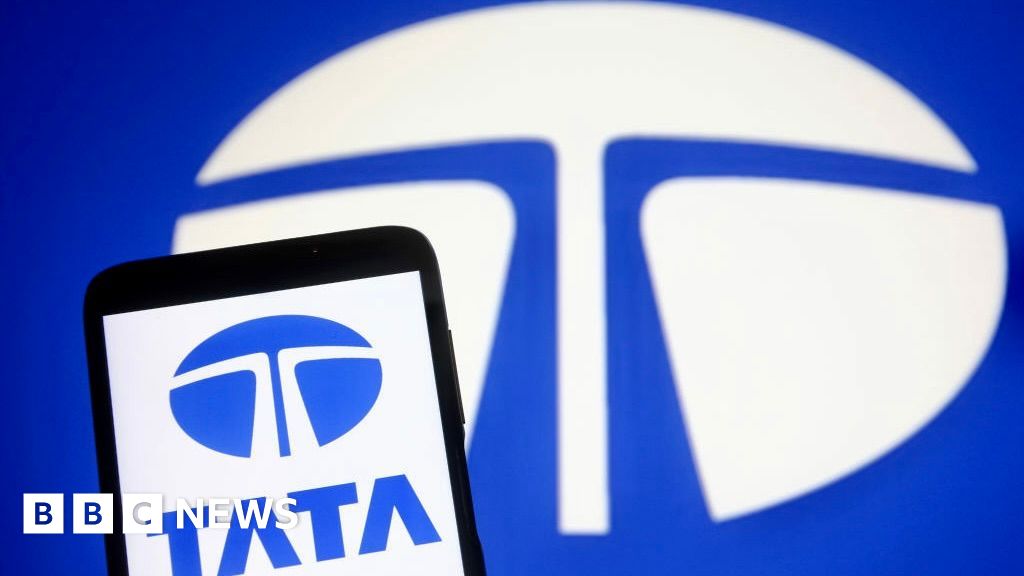
Nikhil InamdarBBC News, Mumbai
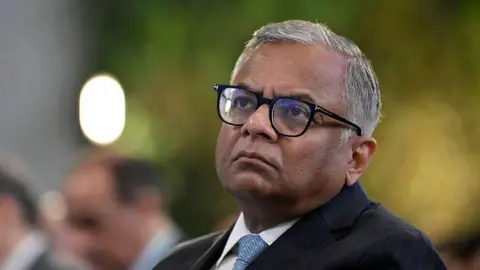 Getty Images
Getty ImagesA year after the death of Ratan Tata, the Tata Group – a gigantic Indian salt-to-steel conglomerate which he steered into a global, modern, technologically advanced enterprise – finds itself facing a plethora of crises.
The business empire, which owns iconic British brands such as Jaguar Land Rover (JLR) and Tetley Tea and makes the iPhone for Apple in India, is, yet again, a divided house.
For months, a boardroom power battle between trustees has exposed internal rifts that forced the government to step in and prevent a repeat of the very public legal tangle that engulfed the Tata empire in 2016, when its former chairman Cyrus Mistry was ousted from the group.
While ministers in Delhi appeared to have brokered an uneasy truce weeks ago, latest reports suggest that Mehli Mistry, a close confidant of Ratan Tata and a trustee on the board of Tata Trusts, has been ousted from his position. The BBC has not been able to independently verify this.
Prof Mircea Raianu of the University of Maryland who’s written a seminal history of the corporation, views the tussle as a “resurfacing of unresolved business” – or the core question of who runs the show at Tata, and how much control majority shareholders (the philanthropic arm Tata Trusts which owns 66% of the parent company, Tata Sons) can wield in making business decisions.
The Tata Group is uniquely structured, with controlling shares of the unlisted commercial holding company (Tata Sons) vested in a philanthropic organisation (Tata Trusts). While this has given the group tax and regulatory advantages, and allows it to carry out charitable activities, experts say it has also led to governance issues given its dual non-profit and commercial objectives.
The latest rift comes at a time when the Tatas are facing severe business headwinds while trying to expand into new growth areas like semiconductors and electric vehicles, as well as attempting to revive Air India – the ailing carrier they bought from the government in 2021 – following a tragic crash earlier this year.
So, what’s gone wrong?
 AFP via Getty Images
AFP via Getty ImagesThe Tatas have not publicly commented on the discord, but it is widely reported to stem from differences among trustees over board nominations, funding approvals and the public listing of Tata Sons – the holding company of 26 publicly listed Tata firms with a market capitalisation of some $328bn.
A source close to the Tata Group told the BBC on condition of anonymity that some of the trustees’ desire for greater influence in making strategic decisions at Tata Sons and picking nominees on its board is at the centre of the tussle. Tata Trusts has three nominees on the Tata Sons board.
“The Tata Trusts nominees have a veto right in major company decisions, but it is understood that theirs is basically a supervisory role, not an assertive one,” said the source. “However now, some of the trustees want more power to make commercial decisions.”
Another more significant point of contention is the desire of the SP Group – the largest minority shareholder in Tata Sons, with an 18% stake – to take the company public. While the former has been pushing hard for it, most Tata trustees are against the idea.
“There is fear that going public would dilute the trust’s decision-making capacity and long-term focus and expose Tata Sons to quarterly market pressures,” said the source. “This is especially because there are so many new businesses at a very nascent stage.”
But the SP Group has called its prospective public listing a “moral and social imperative” that would unlock value for Tata shareholders and improve transparency and governance at the company.
Neither Tata Sons not Tata Trusts have responded to detailed questions from the BBC. But according to Prof Raianu, the tussle highlights a very real dilemma for the group.
A public listing, he says, would be counter to what many giant conglomerates in the United States and Europe are increasingly doing – “opting for foundation ownership to promote stability and sustainability”, ironically, by looking to the Tatas as an example.
“But at the same time, private or closely held companies are indeed subject to less outside scrutiny, which can fuel conflict and harm reputation,” Prof Raianu adds.
 Hindustan Times via Getty Images
Hindustan Times via Getty ImagesThe conflict has already raised governance concerns and hit the brand image of what is arguably one of India’s oldest and most revered business houses, says publicist Dilip Cherian, who once worked closely with former Tata Sons chairman Cyrus Mistry.
“This just adds to the series of blows the Tata image has taken recently,” Mr Cherian told the BBC, referring to the devastating Air India crash earlier this year and the cyber-attack on a key unit of JLR which plunged the UK’s car production to a 70-year-low this September.
Further, TCS, the flagship software outsourcing company that contributes to nearly half the group’s revenues, has been plagued with its own set of challenges, including mass layoffs and the recent ending of a $1bn contract by retailer Marks & Spencer.
“These boardroom battles create further confusion. There will not only be anxiety about share performance, but questions among investors about who exactly they are dealing with at the Tatas,” said Mr Cherian.
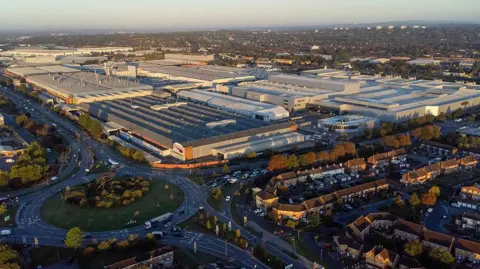 Bloomberg via Getty Images
Bloomberg via Getty ImagesAmid this turmoil, the tenure of N Chandrasekaran, the chairman of Tata Sons, has reportedly been extended.
“The chairman can continue doing his work, since this is not a rift within the board, but between the trustees. But it is an unnecessary distraction for him,” the source close to Tata Sons said.
But the Tatas are not new to firefighting crises. The group saw fierce battles in the 90s after Ratan Tata took over the group and attempted to modernise its operating structure. The conflict that broke out after Mistry’s ouster a few years ago is still fresh in many people’s memory.
There is however, a major difference this time, says Prof Raianu.
“Underperforming companies at the time were held afloat by TCS, which facilitated continuity. Before TCS, this role was played by Tata Steel.”
Right now – with TCS’s business model in a flux and its contribution to overall Tata group revenues coming under pressure – a similar “anchor” to the group is yet to emerge, making it harder for the group to fight such internal divisions.
“It is obviously destabilising and potentially destructive in the short term, but it is possible that a new and more transparent and accountable structure can emerge when the dust settles,” says Prof Raianu.
Follow BBC News India on Instagram, YouTube, X and Facebook.

By Emily Bary
Volume growth picked up in the latest quarter, suggestive of healthy payment activity
Visa’s revenue exceeded expectations in the September quarter.
Volume growth picked up in Visa’s latest quarter, signaling a robust spending landscape.
The company on Tuesday reported 9% growth in payment volume for its September quarter, up from the 8% growth rate posted in the June quarter.
The “continued healthy consumer spending,” as described by Chief Executive Ryan McInerney, drove Visa (V) to beat revenue expectations for the latest quarter. The company posted $10.7 billion on the top line, up 12% from a year earlier and above the $10.6 billion that analysts tracked by FactSet were forecasting.
Adjusted earnings per share came in at $2.98, topping estimates by a penny.
Read: SoFi’s business is on fire, and these earnings numbers show what’s clicking
Visa benefited from 12% growth in cross-border volume, which is largely seen as a proxy for spending related to international travel but also includes things like e-commerce transactions conducted between a merchant and buyer each based in different countries. Cross-border volume tends to be more profitable than domestic volume.
Shares of Visa were edged 0.4% higher in the extended session, with the company’s outlook potentially encouraging as well. Visa just began its new fiscal year and expects a low-single-digit revenue growth rate for fiscal 2026. Analysts tracked by FactSet were looking for $44.2 billion in annual revenue, implying expectations for 10.5% growth.
“As technologies like AI-driven commerce, real-time money movement, tokenization and stablecoins converge to reshape commerce, our focus on innovation and product development positions Visa to lead this transformation,” McInerney said in his statement.
Investors will get another look at the payment-technology landscape on Thursday morning, when Mastercard Inc. (MA) reports its September-quarter results.
See also: PayPal partners with OpenAI – and its stock is rewarded
-Emily Bary
This content was created by MarketWatch, which is operated by Dow Jones & Co. MarketWatch is published independently from Dow Jones Newswires and The Wall Street Journal.
(END) Dow Jones Newswires
10-28-25 2025ET
Copyright (c) 2025 Dow Jones & Company, Inc.

Whether you are scaling a tall building or need to cross an open field faster, utilities are invaluable in Arc Raiders. They might not feel essential during your first few raids, but mastering them early will greatly improve your survival…
CANBERRA, Oct. 29 (Xinhua) — Australia’s total expenditure on healthcare rose to over 10 percent of the country’s gross domestic product (GDP) in 2023-24, according to a government report released on Wednesday.
The report from the…
CANBERRA, Oct. 29 (Xinhua) — Australia’s total expenditure on healthcare rose to over 10 percent of the country’s gross domestic product (GDP) in 2023-24, according to a government report released on Wednesday.
The report from the…

Yes. You can still record calls with another device or a third-party service.
The most common approach is to use a second device as a recorder: Put your iPhone call on speakerphone…